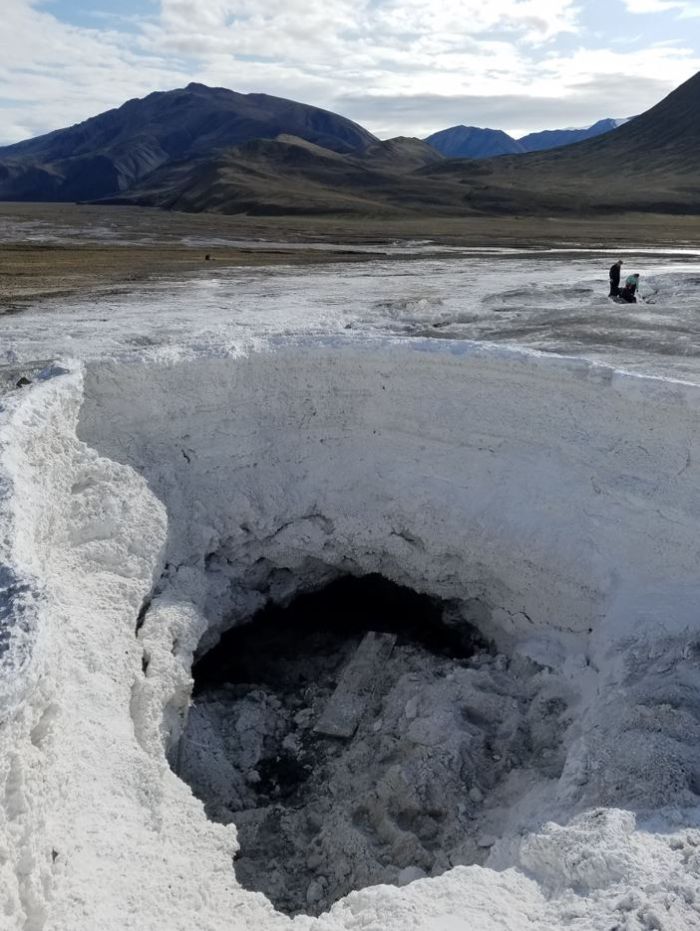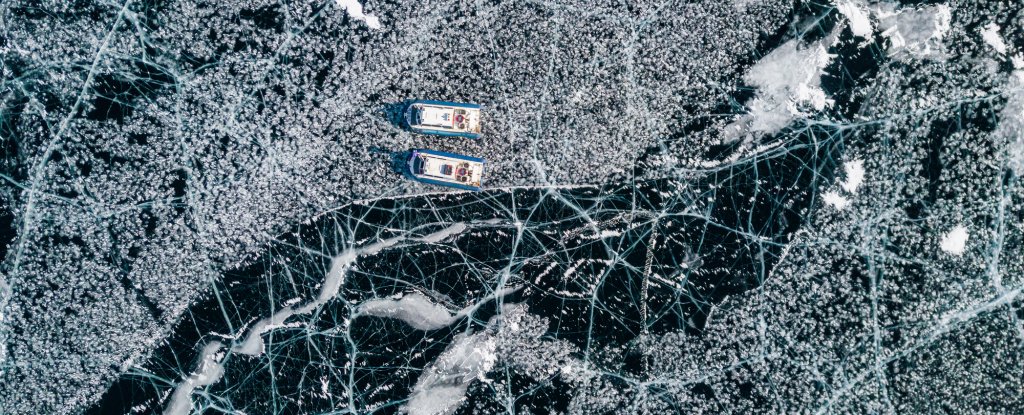Products You May Like
Once again, life has been found in an environment that would be deeply inhospitable to most organisms living on this planet.
Fed by waters that pass through 600 meters (1,970 ft) of permafrost, the sub-zero, salty, virtually oxygen-free Lost Hammer Spring in the Canadian Arctic is one of the harshest places on Earth. Even here, however, life finds a way.
Scientists have found microbes thriving in the briny water that seeps up from deep below the permafrost – and it could offer a hint of the extraterrestrial microbial life that might be found (if there is any) on Europa, Enceladus or Mars.
Life in extraterrestrial environments is going to be tricky to find. Scientists think one of our best bets might be environments that intersect as much as possible with those on the worlds most likely to host life.
Ocean worlds like Jupiter‘s moon Europa and Saturn’s moon Enceladus may not seem to have much in common with a desert world like Mars, but there are some characteristics we can hazard a pretty decent guess at.
Evidence suggests that extremely cold, salty oceans might lurk beneath the ice shells of Europa and Enceladus. Mars, too, might have liquid salty lakes locked beneath its surface. These environments are probably hypersaline. Since salts lower the freezing point of water, they’re likely sub-zero, too. And it’s more than possible that they’re extremely low in oxygen.
Not long ago, scientists found evidence that there might be hypersaline lakes beneath the southern polar ice cap of Mars. Although this discovery is still a topic of hot debate, if there are lakes there, Lost Hammer Spring is pretty close to what we think they might be like.
From deep below the permafrost, water with less than one part per million of dissolved oxygen, around 24 percent salinity and at temperatures around minus 5 degrees Celsius (23 degrees Fahrenheit) seeps up to the surface. Imagine trying to live in that. You couldn’t, not without significant help.
But microbes have been found living in some pretty crazy places. Given its similarity to the maybe-lakes on Mars, microbiologist Elisse Magnuson of McGill University in Canada and her colleagues wanted to see if Lost Hammer Spring might be one of them. Although it wasn’t easy.
 Lost Hammer Spring. (Elisse Magnuson)
Lost Hammer Spring. (Elisse Magnuson)
“It took a couple of years of working with the sediment before we were able to successfully detect active microbial communities,” Magnuson explained.
“The saltiness of the environment interferes with both the extraction and the sequencing of the microbes, so when we were able to find evidence of active microbial communities, it was a very satisfying experience.”
The next step was to roughly characterize the microbial community. For this the team sequenced scraps of genetic material found in their samples, sorting them into scores of microbes belonging to various known microbial phyla.
Most of the microbes they found were entirely new to science and had specific adaptations to allow them not just to live, but thrive, in a place like Lost Hammer Spring.
“The microbes we found and described at Lost Hammer Spring are surprising, because, unlike other microorganisms, they don’t depend on organic material or oxygen to live,” said microbiologist Lyle Whyte of McGill University.
“Instead, they survive by eating and breathing simple inorganic compounds such as methane, sulfides, sulfate, carbon monoxide and carbon dioxide, all of which are found on Mars.
“They can also fix carbon dioxide and nitrogen gasses from the atmosphere, all of which makes them highly adapted to both surviving and thriving in very extreme environments on Earth and beyond.”
This kind of metabolism is known as chemolithotrophic, and has only been found in microbial organisms, at least here on Earth, and usually in pretty extreme environments. So if there is life on Mars with a similar survival strategy, it’s likely, according to what we know of both Earth and Mars, to be very small indeed.
The team plans to cultivate and study some of the most active members of the microbial community to try and learn more about how they adapted to thrive in such an inhospitable environment. This information could help us better understand the likelihood of such organisms emerging on places like Mars, the researchers said.
Which leaves just one burning question: Who’s the poor blighter who lost his hammer 600 meters below the Arctic permafrost?
The team’s research has been published in The ISME Journal.
